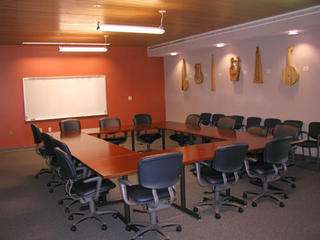
Basic Presentation Skills
Here are few guidelines which I found very helpful in conducting a web conference. Usually there is a lot that can be quickly gained or quickly lost from a presentation. A little bit of guidance goes a long way toward making a highly effective presentation.
Here are few guidelines which I found very helpful in conducting a web conference. Usually there is a lot that can be quickly gained or quickly lost from a presentation. A little bit of guidance goes a long way toward making a highly effective presentation.
The following guidelines are intended for general presentations. These guidelines can be applied to face-to face meetings, web presentations, and desktop video meetings.
Basic Guidelines For Designing Your Presentation
- List and prioritize the top three goals that you want to accomplish with your audience. It's not enough just to talk at them. You may think you know what you want to accomplish in your presentation, but if you're not clear with yourself and others, it is very easy - too easy - for your audience to completely miss the point of your presentation.
- Be really clear about who your audience is and about why is it important for them to be in the meeting. Members of your audience will want to know right away why they were the ones chosen to be in your presentation. Be sure that your presentation makes this clear to them right away. This will help you clarify your invitation list and design your invitation to them.
- List the major points of information that you want to convey to your audience. When you're done making that list, then ask yourself, "If everyone in the audience understands all of those points, then will I have achieved the goal that I set for this meeting?"
- Be clear about the tone that you want to set for your presentation, for example, hopefulness, celebration, warning, teamwork, etc. Consciously identifying the tone to yourself can help you cultivate that mood to your audience.
- Design a brief opening (about 5-10% of your total time presentation time) that:
a. Presents your goals for the presentation.
b. Clarifies the benefits of the presentation to the audience.
c. Explains the overall layout of your presentation.
- Prepare the body of your presentation (about 70-80% of your presentation time).
- Design a brief closing (about 5-10% of your presentation time) that summarizes the key points from your presentation.
- Design time for questions and answers (about 10% of the time of your presentation).
Basic Guidelines About Presentation Materials
- If you plan to use a PowerPoint presentation as part of your meeting, then be sure to carefully review your presentation sequence before the web conference meeting, your objective is to synchronize your audio conference presentation with your PowerPoint slide presentation.
- Use a consistent layout, or organization of colors and images, on your visuals.
- If you use PowerPoint, a good rule to follow is to allocate one image for every 3-5 minutes of your presentation. Include 5-8 lines of bulleted phrases on each image.
- If you provide supplemental information during your presentation, then your audience will very likely read that information during your presentation, rather than listening and following you. Therefore,send out this information after you have completed your presentation. Or, send it out at the beginning of your presentation and ask them not to read it until you have completed your presentation.
Basic Guidelines About Your Delivery
- If you're speaking using desktop video conferencing along with your web presentation then try to accomplish eye contact with the web camera throughout your delivery. Look up from your materials, or notes, every 5-10 seconds, to look into the audience.
- Speak a little bit louder and a little bit slower than you normally would do with a friend. A good way to practice these guidelines is to speak along with a news anchor when you're watching television.
- Vary the volume and rate of your speech. A monotone voice is absolutely toxic to keeping the attention of an audience.
- Keep your hands relatively still, that is, not waving in front of you which can be distracting to the viewer.

No comments:
Post a Comment